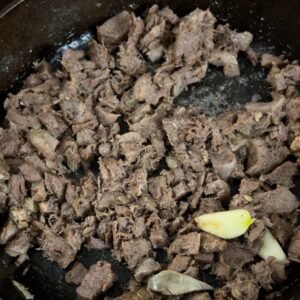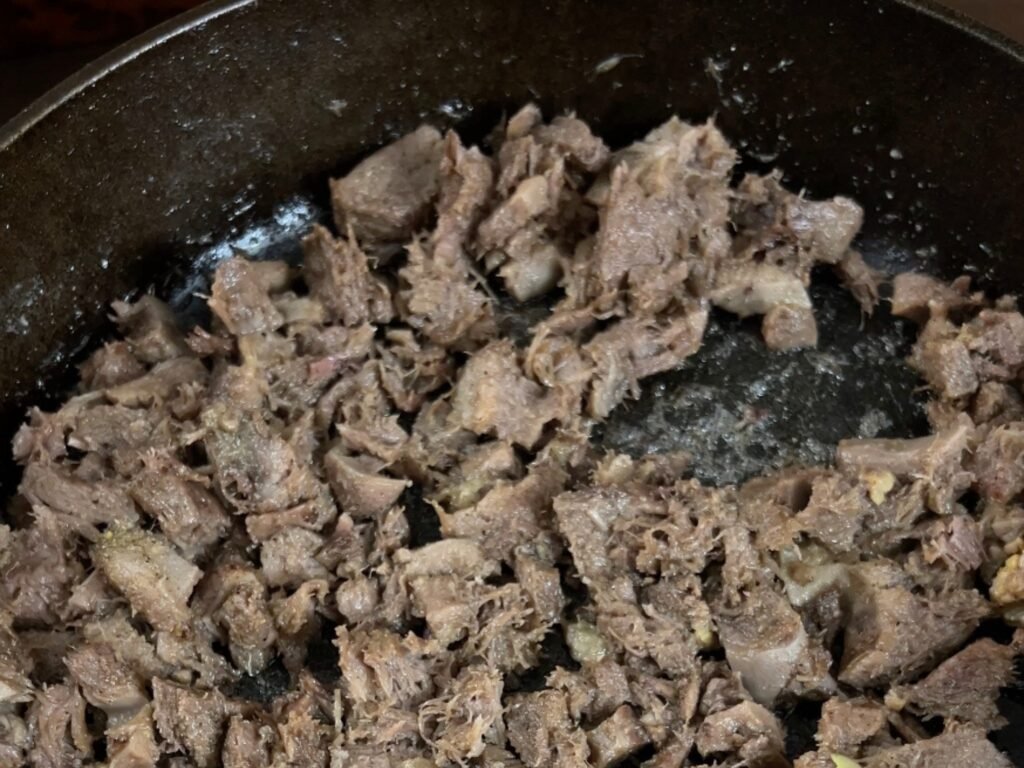No products in the cart.
Korean Beef Bulgogi Recipe
Are you ready to tantalize your taste buds with a mouthwatering Korean Beef Bulgogi recipe? This classic Korean dish is known for its irresistible combination of savory, sweet, and slightly spicy flavors. With thinly sliced beef marinated in a delicious blend of soy sauce, sesame oil, garlic, and ginger, every bite is a burst of umami goodness.
Our brand is here to guide you through this traditional Korean recipe, ensuring that you achieve the perfect balance of flavors and textures. Whether you’re a seasoned chef or a kitchen novice, our step-by-step instructions and helpful tips will guarantee a succulent and authentic bulgogi experience.
The secret to a truly authentic bulgogi lies in the quality of the ingredients and the techniques used. We’ll give you insider tips on choosing the right cuts of beef and the ideal marinating time to ensure tender, juicy results. And for those who prefer a plant-based option, we’ve got you covered with an equally delicious tofu bulgogi variation.
So, get ready to bring a taste of Korea into your kitchen with our irresistible Korean Beef Bulgogi recipe. Get your apron on and let’s dive into the world of tantalizing Korean cuisine. Let the cooking adventure begin!
History and Origins of Beef Bulgogi
Beef Bulgogi has a rich history that dates back centuries in Korean cuisine. The word “bulgogi” translates to “fire meat,” which refers to the traditional method of grilling the marinated beef over an open flame. This cooking technique originated during the Goguryeo era and has been passed down through generations.
The popularity of beef bulgogi grew during the Joseon Dynasty when it became a favorite dish among the royal court and the upper class. Over time, it became a staple in Korean households and eventually gained international recognition as one of Korea’s most beloved dishes.

Korean Beef Bulgogi
Print Recipe Pin RecipeThis classic Korean dish is known for its irresistible combination of savory, sweet, and slightly spicy flavors.
Kitchen equipment list
- 1 Cast Iron Skillet
Ingredients
- Soy Sauce: This is the base of the marinade and adds a savory umami flavor to the beef.
- Sesame Oil: Sesame oil adds a nutty aroma and enhances the overall taste of the marinade.
- Garlic: Freshly minced garlic adds a pungent and aromatic element to the marinade.
- Ginger: Freshly grated ginger adds a subtle spiciness and depth of flavor to the marinade.
- Brown Sugar: Brown sugar adds a touch of sweetness to balance out the savory and spicy flavors.
- Pear or Kiwi: These fruits are used as natural tenderizers, helping to break down the proteins in the meat and make it more tender.
Instructions
- Start by choosing the right cut of beef. The most commonly used cuts for bulgogi are sirloin, rib-eye, or tenderloin. These cuts are tender and have a good amount of marbling, which adds flavor and juiciness to the dish.
- Slice the beef thinly against the grain. This ensures that the meat remains tender and easy to chew after cooking.
- In a bowl, combine the soy sauce, sesame oil, minced garlic, grated ginger, brown sugar, and either grated pear or kiwi. Mix well until the sugar has dissolved.
- Place the sliced beef into a resealable plastic bag or a shallow dish. Pour the marinade over the beef, making sure it is well coated. Seal the bag or cover the dish with plastic wrap and let it marinate in the refrigerator for at least 1 hour, but preferably overnight.
- When you're ready to cook, remove the beef from the marinade and discard any excess liquid. Allow the beef to come to room temperature before cooking.
- Heat a grill or a large skillet over medium-high heat. Add a drizzle of oil to prevent sticking. Working in batches, cook the beef for about 2-3 minutes per side, or until it is cooked through and slightly caramelized.
- Once cooked, transfer the beef to a serving platter and garnish with sesame seeds and thinly sliced green onions. Serve immediately and enjoy!
❋ Kitchen Chaos Unlocked Tips
Tips for Grilling or Pan-Frying Beef Bulgogi
Grilling or pan-frying beef bulgogi requires some finesse to ensure that the meat is cooked to perfection. Here are some tips to help you achieve delicious results:- Preheat your grill or skillet to medium-high heat before cooking the beef. This ensures that the meat cooks evenly and develops a nice sear.
- If using a grill, make sure the grates are clean and lightly oiled to prevent sticking.
- When cooking the beef, avoid overcrowding the pan or grill. Cook in batches if necessary to allow the meat to cook evenly and develop a caramelized crust.
- For a smoky flavor, you can add a few wood chips to your grill or use a cast-iron skillet on the stovetop.
- When grilling, flip the beef only once to prevent it from drying out. If pan-frying, stir the beef occasionally to ensure even cooking.
- Don't overcook the beef. It should be tender and slightly pink in the center.
Nutrition
Serving: 132 gCalories: 334 kcalCarbohydrates: 12 gProtein: 25 gFat: 21 gCholesterol: 75 mg
Tried this recipe? Mention @KitchenChaosUnlocked or tag #KitchenChaosUnlocked!
Serving Suggestions and Side Dishes for Beef Bulgogi
Beef bulgogi is traditionally served with a variety of side dishes and accompaniments to enhance the overall dining experience. Here are some popular options:
- Lettuce Wraps: Serve the beef bulgogi with fresh lettuce leaves to create wraps. Place a piece of beef on a lettuce leaf, add some rice, and top it with ssamjang (a spicy Korean dipping sauce). Roll it up and enjoy!
- Steamed Rice: Bulgogi pairs perfectly with steamed white rice. The mild flavor of the rice complements the bold flavors of the beef.
- Kimchi: Kimchi, a traditional Korean fermented side dish, adds a tangy and spicy element to the meal. It helps cleanse the palate and balances the richness of the beef.
- Pickled Vegetables: Serve pickled vegetables such as radishes, cucumbers, or carrots as a refreshing and crunchy side dish.
- Korean Pancakes: Add some crispy Korean pancakes (pajeon) to your meal for a delightful combination of textures.
- Miso Soup: A warm bowl of miso soup can be a comforting addition to your beef bulgogi meal.
Health Benefits of Beef Bulgogi
Beef bulgogi not only satisfies your taste buds but also offers several health benefits. Here are a few reasons why you can enjoy this dish guilt-free:
- Protein: Beef is a rich source of high-quality protein, which is essential for building and repairing tissues.
- Iron: Beef is also a good source of iron, a mineral that helps carry oxygen to your cells and supports overall energy levels.
- Vitamins and Minerals: The marinade ingredients, such as garlic, ginger, and pear, provide a range of vitamins and minerals that contribute to a healthy diet.
- Low Fat: When using lean cuts of beef and trimming any visible fat, bulgogi can be a low-fat dish.
Variations and Alternative Recipes for Beef Bulgogi
While the classic beef bulgogi recipe is beloved by many, there are also variations and alternative recipes that you can try. Here are a few popular options:
- Tofu Bulgogi: For a vegetarian or vegan option, replace the beef with firm tofu. Marinate and cook it in the same way as the beef bulgogi, and enjoy the same delicious flavors.
- Chicken Bulgogi: Substitute the beef with thinly sliced chicken breast or thigh meat. The marinade works equally well with chicken, giving you a tasty alternative.
- Pork Bulgogi: Pork bulgogi, known as “dwaeji bulgogi,” is another delicious variation. Use thinly sliced pork shoulder or pork belly and follow the same marinating and cooking process.
- Spicy Bulgogi: If you prefer a spicier kick, add some gochujang (Korean chili paste) or red pepper flakes to the marinade for a spicy bulgogi experience.
Where to Find Authentic Korean Ingredients for Beef Bulgogi
To create an authentic Korean Beef Bulgogi, it’s essential to use the right ingredients. While some supermarkets may carry Korean ingredients, you may find a wider selection at Asian grocery stores or online retailers specializing in Korean products. Look for high-quality soy sauce, sesame oil, and gochugaru (Korean red pepper flakes) for that authentic Korean flavor.
Conclusion and Final Thoughts on Korean Beef Bulgogi
Korean Beef Bulgogi is a dish that captures the essence of Korean cuisine with its flavorful marinade and tender, juicy meat. Whether you’re a fan of Korean food or new to this culinary adventure, this recipe will transport your taste buds to the vibrant streets of Korea.
By following our step-by-step instructions and incorporating our tips, you can create a mouthwatering bulgogi experience in your own kitchen. Whether you choose the classic beef version or opt for a vegetarian or alternative meat option, the flavors and aromas of bulgogi will leave you craving more.
So, gather your ingredients, fire up the grill or heat up the skillet, and embark on a delicious journey through Korean cuisine. Let the sweet, savory, and slightly spicy flavors of Korean Beef Bulgogi take you on a culinary adventure that will keep you coming back for seconds and thirds. Enjoy!

